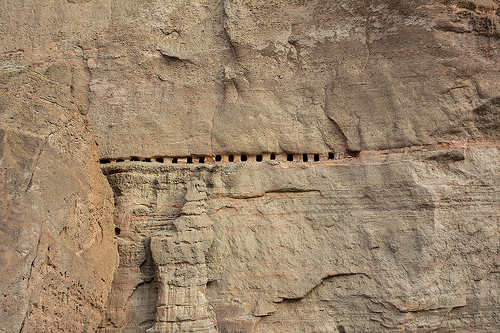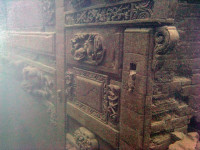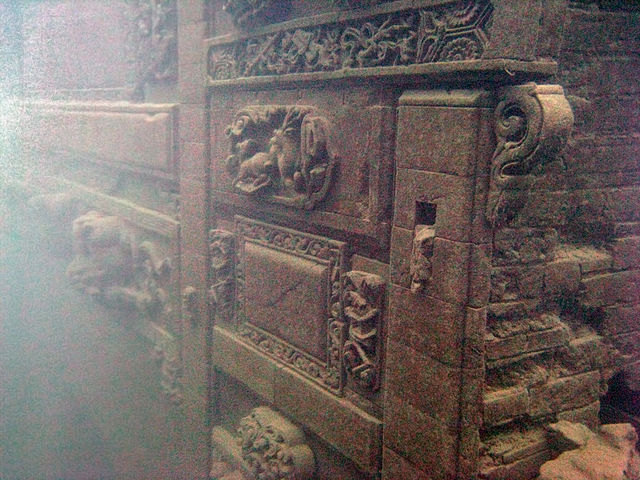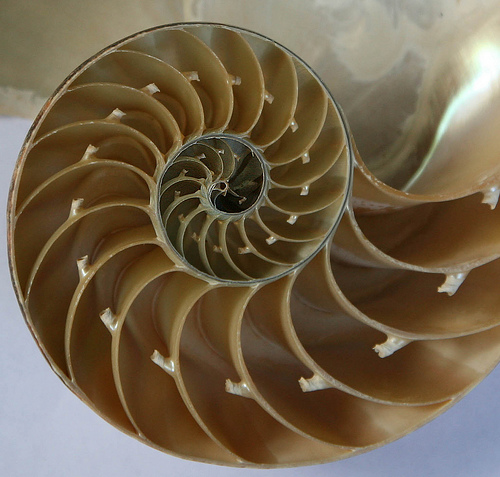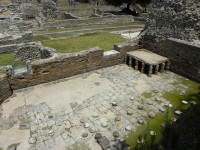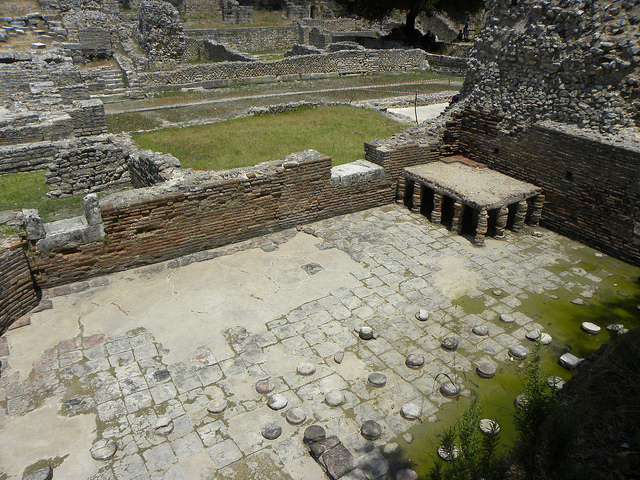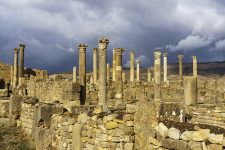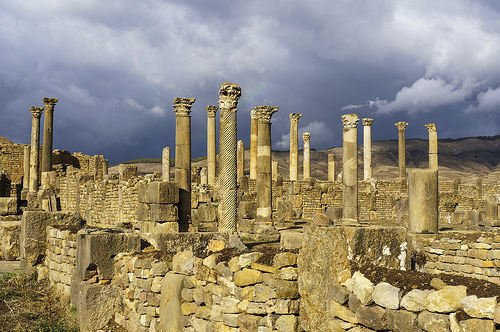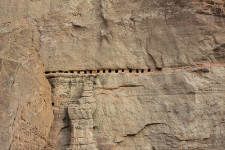
Is it worth climbing the treacherous heights of the Mustang Caves just to bury the dead?
- The Mustang Caves is a network of manmade caves found in a remote area of Nepal, in the Himalaya mountain region, in Asia.
- The ‘Mustang Caves’ are also known as the ‘Caves of Mustang’ and ‘Sky Caves of Nepal’.
- Some of the Mustang Caves reach an elevation of 47 metres (155 feet) from the valley floor.
- Around 10,000 caves are thought to be associated with the Mustang Caves network, many of which were homes, contain murals, or are sites of burials.
- Originally the Mustang Caves were not accessible to foreigners as a result of political unrest in nearby Tibet, and since 1992, it has been open to visitors who obtain a permit.
Mustang Caves
Image courtesy of Elaphurus/Flickr
- At least 8000 documents have been discovered in the Mustang Caves, most thought to originate from around the 1400s AD, and many are works of a spiritual nature.
- Climbing up the Mustang Caves can be dangerous task, as rocks ahead are prone to loosening or crumbling, while the stability of the ledges are unpredictable.
- It is thought that the Mustang Caves were originally used as gravesites, and were later adapted as shelters and homes, and by the 1400s, they were mostly abandoned and used for religious purposes.
- Approximately two thirds to three quarters of the human bones found occupying the Mustang Caves have cuts on them, possibly as a result of the civilisation’s burial procedure of slicing the flesh off the bones and allowing vultures to consume it.
- In the Mustang Caves area there are a few small towns and villages, and as the area once belonged to Tibet and was closed to outsiders for a long time, it has kept much of its historical language and culture, most of which reflects Tibetan customs.
Bibliography:
The Ancient Mysteries of Mustang’s Caves, 2013, BBC Travel, http://www.bbc.com/travel/story/20130501-the-ancient-mysteries-of-mustangs-caves
Bond A, Mystery of the ancient kingdom discovered in Nepal where thousands of caves are carved 155ft off the ground, 2013, Daily Mail Australia, http://www.dailymail.co.uk/news/article-2403094/Mystery-ancient-caves-Nepal.html
Cave People of the Himalaya, 2012, PBS, http://www.pbs.org/program/cave-people-himalaya/
The Mysterious Caves of Mustang, Nepal, 2016, Amusing Planet, http://www.amusingplanet.com/2016/03/the-mysterious-caves-of-mustang-nepal.html
Finkel M, Sky Caves of Nepal, 2016, National Geographic, http://ngm.nationalgeographic.com/2012/10/mustang-caves/finkel-text





